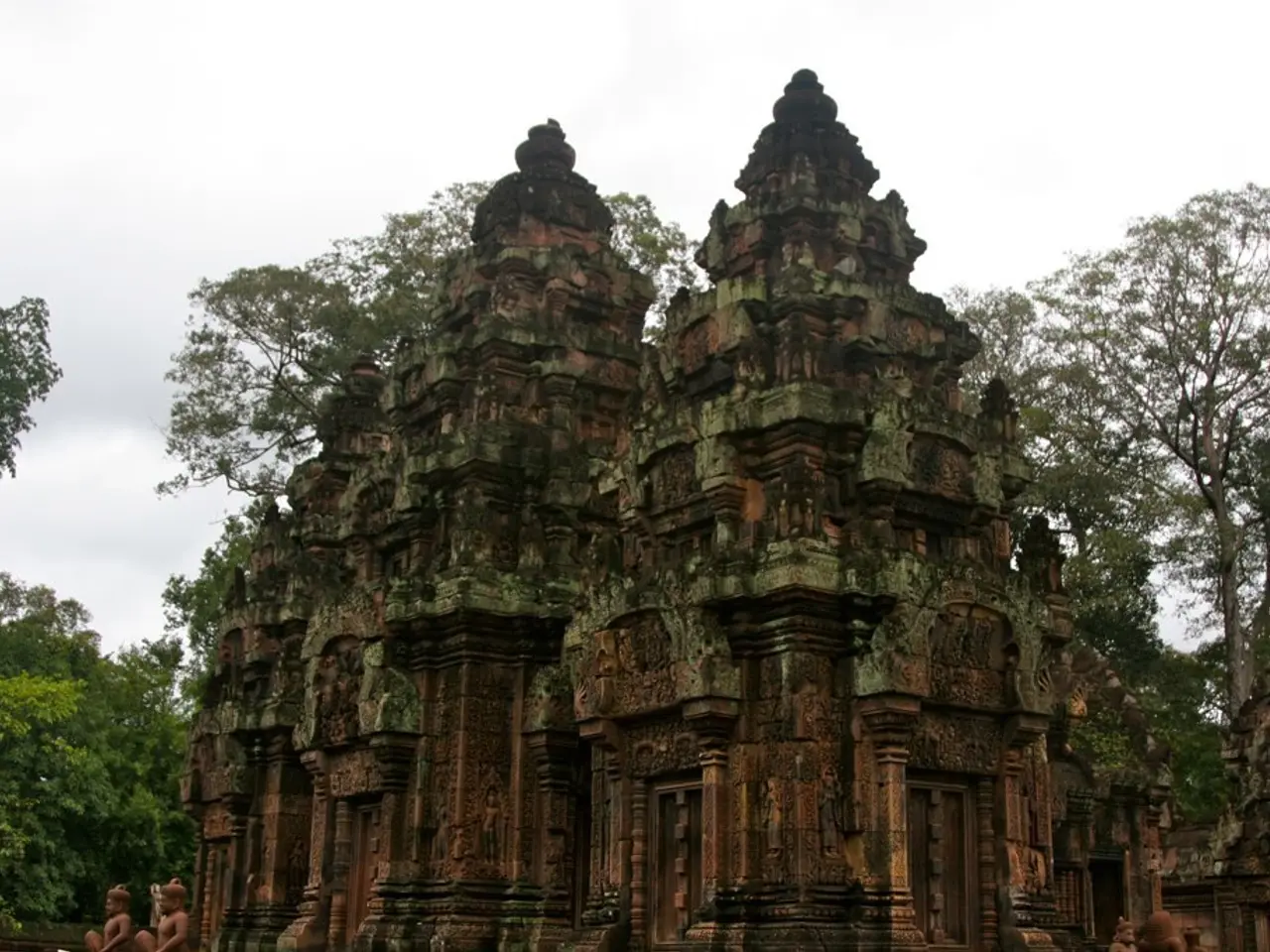Venerable and breathtaking temples scattered across Asia
Discovering the Wonders of Asia's Temples
Asia, the largest and most populous continent, offers a rich tapestry of cultures, histories, and religions. Among its many treasures, the continent's temples stand as architectural and historical marvels, each with its unique history and design.
One such temple is the "White Temple," or Wat Rong Khun, located in Chiang Rai Province, Thailand. This privately-owned Buddhist temple, completed in 1997 by the artist Chalermchai Kositpipat, is a striking sight with its entirely white structure and intricate details.
In neighbouring Myanmar, the Thatbyinnyu Temple, constructed during the Bagan period, is a testament to the innovative architectural and artistic creativity of the time. Completed in 1150-51 during the reign of King Sithu I, this Theravada Buddhist temple is a UNESCO World Heritage Site, much like Borobudur in Central Java, Indonesia, the world's largest Buddhist temple.
The Shwedagon Pagoda, located in Yangon, Myanmar, is another awe-inspiring temple. Constructed more than 2,600 years ago, it is potentially the oldest Buddhist stupa in the world. The pagoda is covered with gold and encrusted with 4,531 diamonds, making it a breathtaking sight. It is also the most sacred Buddhist pagoda in the country, believed to contain relics of the four previous Buddhas.
On the other side of Asia, in Bhutan, the Taktsang Palphung Monastery, or the Tiger's Nest, is a spiritual and architectural wonder. Built around a cave, this monastery can be reached in 2-3 hours on foot or by horse. Similar to Wat Rong Khun, it was built in the 17th century.
In Kuala Lumpur, Malaysia, the Thean Hou Temple, completed in 1987, is a six-tiered temple inspired by elements of Buddhism, Confucianism, and Taoism. It is dedicated to the Chinese sea goddess Mazu.
The Temple of Heaven in Beijing, China, constructed between 1406 and 1420, is another UNESCO World Heritage Site. Like the Harmandir Sahib, built in the 16th century in India, it is an open house of worship for all men and women, from all walks of life and faith. The Harmandir Sahib is the holiest temple of the Sikh religion.
These temples, each unique in their design and history, reflect the diversity and sophistication of temple compounds and archaeological sites in Asia. For example, Angkor Wat in Cambodia and the Prambanan Temple Compounds on the border between Yogyakarta and Central Java, Indonesia, demonstrate this diversity and sophistication.
In conclusion, Asia's temples are a testament to the rich cultural heritage of the continent. Each temple stands as a unique architectural and historical marvel, offering a glimpse into the diverse cultures, histories, and religions of Asia.
Read also:
- Peptide YY (PYY): Exploring its Role in Appetite Suppression, Intestinal Health, and Cognitive Links
- Toddler Health: Rotavirus Signs, Origins, and Potential Complications
- Digestive issues and heart discomfort: Root causes and associated health conditions
- House Infernos: Deadly Hazards Surpassing the Flames








